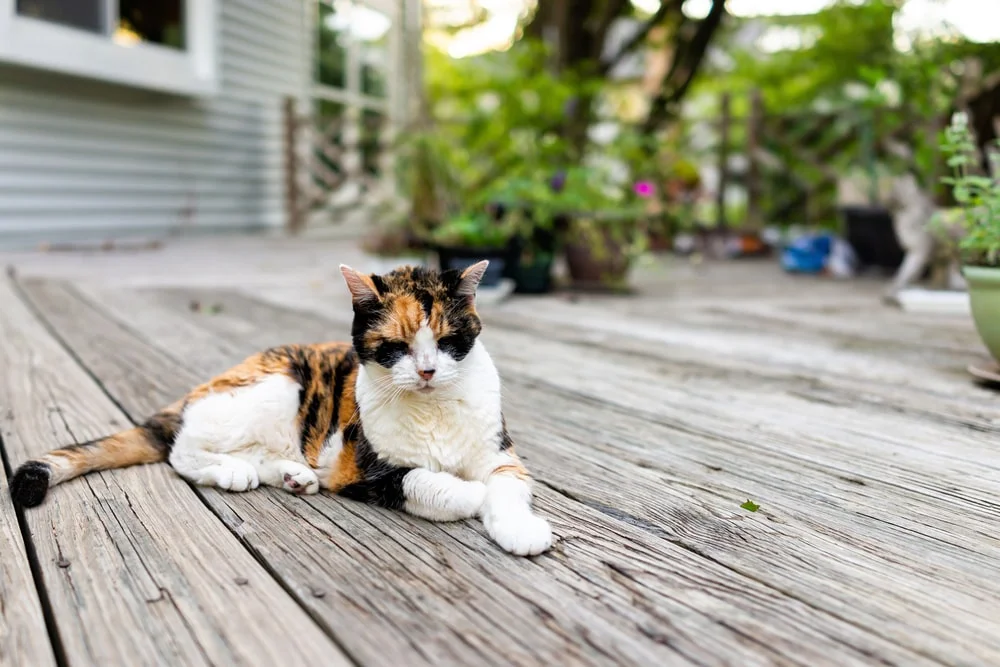PET HEALTH
Hyperthyroidism in Cats: Causes, Symptoms, & Treatment
Indoor cats can live long, happy lives, but their elusive nature can make it difficult to notice when they’re sick. Hyperthyroidism is one of the most common illnesses indoor cats can experience. And cat hyperthyroidism treatment can include prescriptions, surgery, or therapies that could cost anywhere from $600 – $2,700 or more.1
Here’s what you should know about the disease, including how it’s diagnosed and a breakdown of treatment costs.
What Is Hyperthyroidism in Cats?
Feline hyperthyroidism, or thyrotoxicosis, is caused by the overproduction of hormones from a cat’s thyroid gland.2 Thyroid glands are a pair of butterfly-shaped glands located on either side of the windpipe. This affliction is one of the most common hormonal disorders in middle-aged and senior cats.2
Hyperthyroidism is usually caused by a benign tumor that produces excess thyroid hormones in one or both thyroid glands. This can lead to an increased metabolic rate, heart issues, and more. Because thyroid issues in cats tend to affect other systems in their body, it can be difficult to diagnose.3
Hyperthyroidism in Cats: Symptoms
Signs of hyperthyroidism in cats aren’t always easy to recognize, since many of them could have several other causes. Not all cats exhibit all of the symptoms associated with feline hyperthyroidism, either, which can make it difficult for pet parents to diagnose it on their own.
The most common hyperthyroidism symptoms in cats can include:2,3
- Weight loss
- Excessive appetite
- Increased urination and thirst
- Vomiting
- Diarrhea or increased fecal volume
- Hyperactivity
- Unruly or unkempt fur
Pet Insurance May Help Cover Hyperthyroidism Costs
Some other signs of hyperthyroidism in cats can be heart issues, which can include:2,3
- Increased heart rate
- Heart murmurs
- Shortness of breath
- An enlarged heart
- Congestive heart failure
Keep in mind that hyperthyroidism can be a progressive disease. This means it may take several years for a cat to experience complications from hyperthyroidism. It also means symptoms of late-stage hyperthyroidism in cats tend to be more severe.2
If you notice any of these symptoms in your cat, schedule a vet visit as soon as possible to get ahead of the problem.
Diagnosing Hyperthyroidism in Cats
To diagnose hyperthyroidism, your vet may perform a physical exam that focuses on your cat’s throat.2 They’ll look for any lumps or masses that may indicate a tumor is present. After the exam, your vet should discuss behavior you’ve noticed at home — such as vomiting or weight loss.
Lastly, your cat’s hormones will usually be measured using a blood panel. This test will measure the amounts of T3 and T4 (iodine-containing hormones) in your cat’s blood sample.3 This test can often be done in-house, so you might get the results quickly. That said, it could still take a few days for the sample to be thoroughly tested and examined.
How long does a cat live with hyperthyroidism?
Hyperthyroidism in cats, left untreated, can pose a serious health risk. The good news, however, is that treating feline hyperthyroidism typically leads to a good prognosis. Cats who undergo treatment can live another 5 years on average — which is especially impressive when you consider that most thyroid issues in cats don’t appear until they’re already in their golden years!4
Hyperthyroidism in Cats: Treatment
Vets may choose to manage the hormonal disorder with simple lifestyle changes, medications, surgery, or a combination of all these approaches. Here’s what treatment of hyperthyroidism in cats could look like.
Lifestyle changes
Once you’ve received the diagnosis, your vet can work with your family on lifestyle changes to gain control of hyperthyroidism. This may involve feeding your cat a specialty diet. Hyperthyroidism diets are low in iodine — which can help minimize symptoms — and are typically given to diagnosed cats for the rest of their lives.2,3
Your vet may also encourage you to give your cat more exercise. Talk to your vet about ways to boost your cat’s energy levels through solutions like catnip or manage their playtime throughout the day.
Medications and therapy
Medications for hyperthyroidism in cats are prescribed on a case-by-case basis. Currently, there’s only one FDA-approved medication to treat feline hyperthyroidism called methimazole.3,5 The dosage may vary — but typically, a cat is given this oral medication every 12 hours.3,5
Another option may be radioactive iodine therapy, which works by injecting iodine into the thyroid glands, destroying the overactive tissues.2,3 This method is often considered safe, simple, and effective for most cats.
Surgery
Your vet may suggest surgically removing the affected thyroid glands.2,3 Some cats don’t qualify for surgery because of their age and health. For example, if your cat has kidney disease and they’re diagnosed with hyperthyroidism, your vet may decide it’s too risky to perform surgery.3
The reason? If parts of both glands or all of the glands are removed, your pet will have to take hormone replacements for the rest of their life.1,3 These hormonal medications have side effects that can impact their lifestyle and how well their organs function. It’s recommended to weigh the pros and cons with your vet before deciding to move forward with such a procedure.
Hyperthyroidism in Cats: Treatment Costs
The cost of treating feline hyperthyroidism varies depending on which option(s) you and your vet decide to pursue, as well as where you live, your cat’s specific case, and the vet you see. Here’s some example pricing from the Cat Thyroid Center in Hillsborough County, Florida:1
- Prescription diet: Up to $1,200 per year
- Medication: $600 – $900 per year (includes regular exams and tests to monitor progress)
- Radioactive iodine therapy: $1,600 – $2,700+ (includes treatment and hospitalization)
- Surgery: $1,800 – $2,500+ per surgery
It’s important to keep in mind that a cat with hyperthyroidism may require multiple forms of treatment. For example, surgery and radioactive iodine therapy could be prescribed in tandem. Your cat may also need multiple rounds of surgery, depending on the number of tumors present.
Cat insurance can help shoulder the cost of treatment. However, it’s important to insure your cat as early as possible in their life to avoid coverage exclusion for pre-existing conditions.
Pet Insurance Can Help With Treatment Costs
A hyperthyroidism diagnosis can be a scary time for cat parents. Luckily, hyperthyroidism in cats is both common and treatable, so vets across the country are ready and able to help you care for your pet. MetLife Pet is also here to help you give your cat the care they need, with pet insurance that can reimburse you for covered costs.6 Learn more about how our pet insurance plans work, or get started with a free quote today.
Help Protect Your Cat at Any Age
855-270-7387


